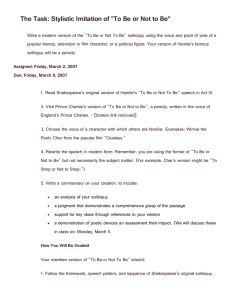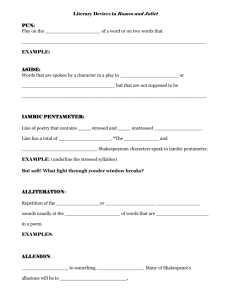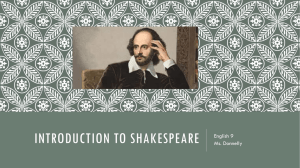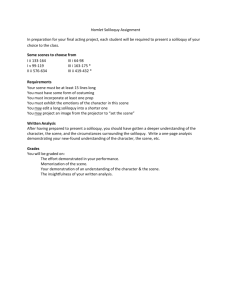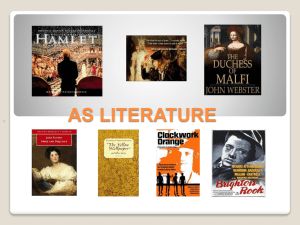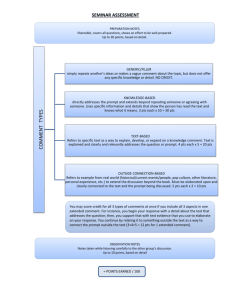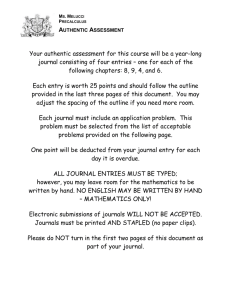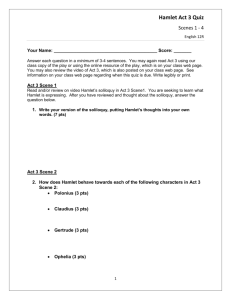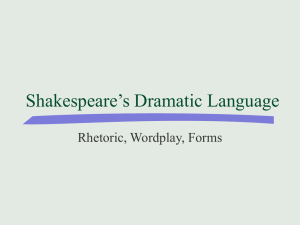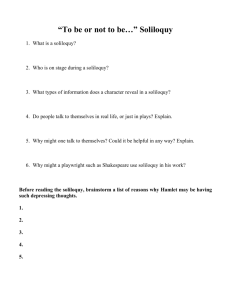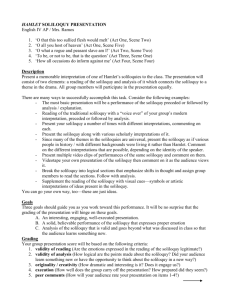HamletJournal Rev0506.doc
advertisement
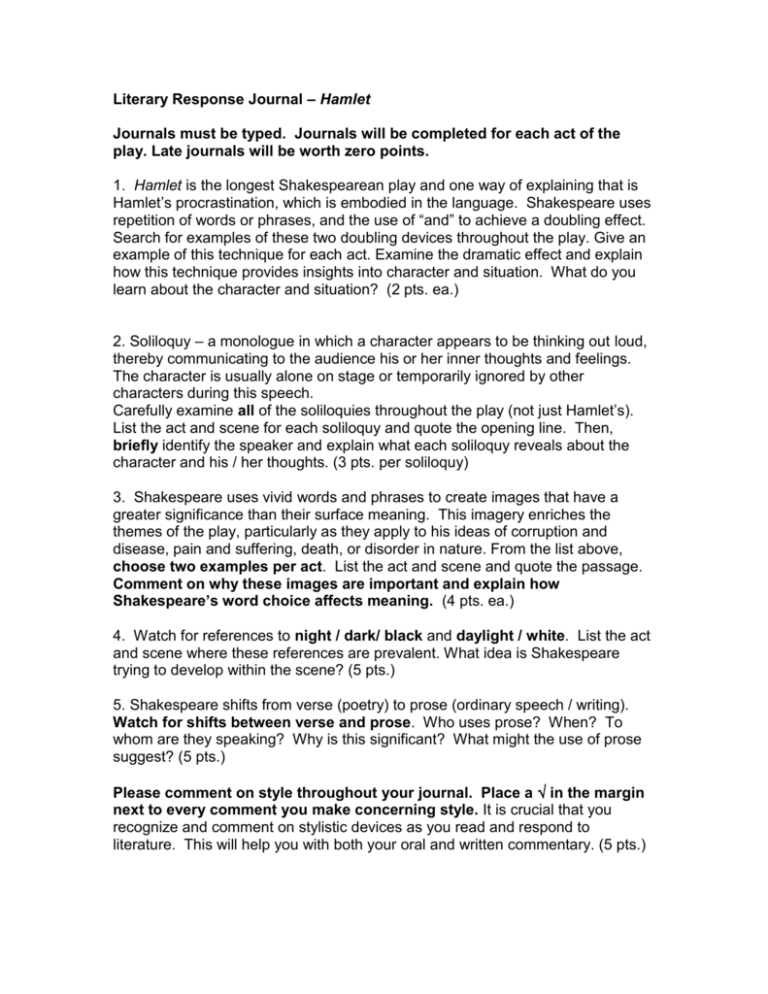
Literary Response Journal – Hamlet Journals must be typed. Journals will be completed for each act of the play. Late journals will be worth zero points. 1. Hamlet is the longest Shakespearean play and one way of explaining that is Hamlet’s procrastination, which is embodied in the language. Shakespeare uses repetition of words or phrases, and the use of “and” to achieve a doubling effect. Search for examples of these two doubling devices throughout the play. Give an example of this technique for each act. Examine the dramatic effect and explain how this technique provides insights into character and situation. What do you learn about the character and situation? (2 pts. ea.) 2. Soliloquy – a monologue in which a character appears to be thinking out loud, thereby communicating to the audience his or her inner thoughts and feelings. The character is usually alone on stage or temporarily ignored by other characters during this speech. Carefully examine all of the soliloquies throughout the play (not just Hamlet’s). List the act and scene for each soliloquy and quote the opening line. Then, briefly identify the speaker and explain what each soliloquy reveals about the character and his / her thoughts. (3 pts. per soliloquy) 3. Shakespeare uses vivid words and phrases to create images that have a greater significance than their surface meaning. This imagery enriches the themes of the play, particularly as they apply to his ideas of corruption and disease, pain and suffering, death, or disorder in nature. From the list above, choose two examples per act. List the act and scene and quote the passage. Comment on why these images are important and explain how Shakespeare’s word choice affects meaning. (4 pts. ea.) 4. Watch for references to night / dark/ black and daylight / white. List the act and scene where these references are prevalent. What idea is Shakespeare trying to develop within the scene? (5 pts.) 5. Shakespeare shifts from verse (poetry) to prose (ordinary speech / writing). Watch for shifts between verse and prose. Who uses prose? When? To whom are they speaking? Why is this significant? What might the use of prose suggest? (5 pts.) Please comment on style throughout your journal. Place a in the margin next to every comment you make concerning style. It is crucial that you recognize and comment on stylistic devices as you read and respond to literature. This will help you with both your oral and written commentary. (5 pts.)
